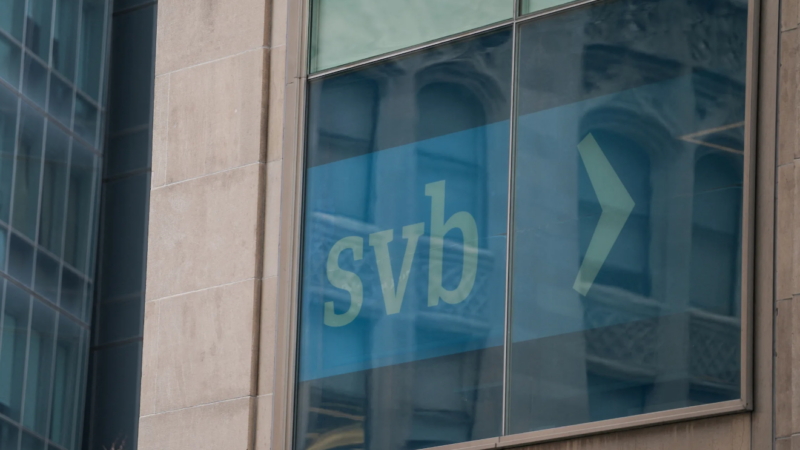The collapse of Silicon Valley Bank has set the regional banking sector on edge and raised questions about proper risk management, insider selling, and exposure to cryptocurrencies
The spectacular collapse of SVB Financial, also known as Silicon Valley Bank, sent shockwaves through the venture capital and technology industries amid uncomfortable echoes of the 2008 financial crisis. Investors, regulators, and lawmakers are now left to clean up the mess with a keen eye on potentially minimizing systemic risk or contagion associated with the bank’s demise.
As more facts surface, regulators and lawmakers are sure to investigate the risk management or compliance failures within the bank. Such inquiries often lead to new regulations or regulatory change in the future.
What is known about SVB & its collapse
SVB grew rapidly from its beginnings in Silicon Valley in 1983. Much of its growth can be directly linked to its close relationships it fostered with the venture capital and private equity firms that helped launch many technology companies.
With $209 billion in deposits, SVB was the 16th largest bank in the United States. The collapse began late on March 8 when it sought to raise more than $2 billion in capital to shore up its balance sheet. The company said it needed the additional capital because it had incurred a $1.8 billion loss on the sale of investments in U.S. treasuries and mortgage-backed securities.
As the publicly-traded shares collapsed, and the company failed to raise the needed capital, depositors withdrew a staggering $42 billion by the end of the next day, according to a California regulatory filing. According to the filing, the bank had a negative cash balance of $958 million at the close of business. On Friday, March 10, California banking regulators closed the bank and appointed the Federal Deposit Insurance Corporation (FDIC) as receiver for the later disposition of its assets.
U.S. Treasury Secretary Janet Yellen told the CBS News “Face the Nation” show Sunday morning that she had been working with regulators to “design appropriate policies to address the situation” but declined to give further details. Asked if depositors should be paid back in full, Yellen declined to comment on the details. “We’re very aware of the problems that depositors will have. Many of them are small businesses that employ people across the country. Of course, this is a significant concern,” she said.
As fears deepened of a broader fallout across the U.S. regional banking sector and beyond, Yellen said she was working to protect depositors but ruled out a bailout. “We want to make sure that the troubles that exist at one bank don’t create contagion to others that are sound,” Yellen told CBS.
The Federal Reserve, the FDIC and the Treasury issued a joint statement that said it would backstop all depositors. “Depositors will have access to all of their money starting Monday, March 13. No losses associated with the resolution of Silicon Valley Bank will be borne by the taxpayer.”
The funding would be made available through the Federal Reserve to banks to ensure the ability to meet the needs of all depositors through a new bank term funding program. Separately, the regulators announced a similar move involving Signature Bank, of New York, which was closed on Sunday by its state chartering authority.
Regulators were careful to clarify that the backstopping of the depositors was not a “bailout” of shareholders or the companies but rather “necessary steps to ensure that depositors’ savings remain safe.”
What is unknown from a risk & compliance perspective
The losses incurred by SVB stem from the steep increase in interest rates as the Federal Reserve has raised the Fed Funds short-term interest rate from 0.25% to 4.75 % over the past year in its effort to fight inflation. The increase in rates resulted in investment losses which, in turn, led to a run on the bank as depositors withdrew funds.
The bank’s sudden collapse raises a host of regulatory, compliance, and risk management questions for a wide spectrum of financial services firms, including:
-
- Questions surrounding risk management — SVB had no chief risk officer (CRO) for nearly eight months last year, and whether this played a role in any possible risk management or control failures is unknown. The bank’s inability to hedge or effectively navigate one of the most well-telegraphed increases in interest rates over the past year raises serious questions, however.
- Contagion to cryptos — Although the SVB collapse was not a result of any activities directly related to cryptocurrencies, Stablecoin USD Coin (USDC) lost its dollar peg and slumped to an all-time low late last week before recovering most of its losses after Circle, the firm behind it, assured investors it would honor the peg despite its exposure to SVB. Circle said in a tweet last Friday that it had $3.3 billion of its $40 billion of USDC reserves held at Silicon Valley Bank.
- Potential insider sales of stock— The public, lawmakers, and regulators will surely inquire who knew what, and when, and why Greg Becker, chief executive of SVB, sold $3.6 million in stock on February 27.
- Clawbacks of executive compensation— Regulators may also attempt to claw back executive compensation at the bank. The questions to come include, how widespread the clawbacks will be and how far back in time. The answers will hinge on the specifics of what was known and when.
- ESG criticism — Critics of environmental, social & governance (ESG) policies have taken to Twitter and other media outlets to question the bank’s ESG efforts and whether its environmental and social commitments were more important than traditional financial risk management.
Gary Gensler, chair of the U.S. Securities and Exchange Commission (SEC), said over the weekend that: “In times of increased volatility and uncertainty, we at the SEC are particularly focused on monitoring for market stability and identifying and prosecuting any form of misconduct that might threaten investors, capital formation, or the markets more broadly.
“Without speaking to any individual entity or person, we will investigate and bring enforcement actions if we find violations of the federal securities laws.”
This article contains additional reporting from Reuters.







